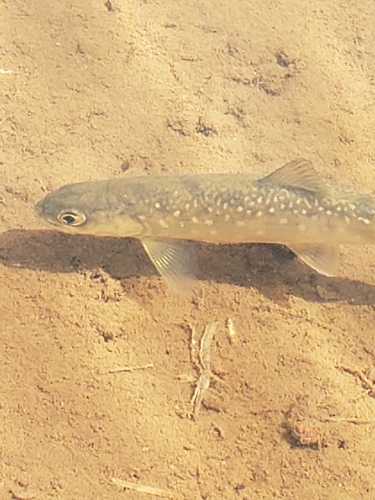The stocking density of fish in aquaponic systems is subject to legal requirements and biological limits. This article explains the legal framework and practical recommendations for species-appropriate husbandry.

Legal Basis: REGULATION (EC) No 710/2009
The European Union regulates organic aquaculture in Regulation (EC) No 710/2009. These requirements are binding for all operations that wish to market their products as organic.
Application Note
The specified stocking densities represent maximum values. In practice, lower densities should be aimed for to ensure the stability of the aquaponic system and the well-being of the fish.
Stocking Densities according to EU Organic Regulation
The maximum permitted stocking densities for different fish species in closed recirculating systems:
Overview of Maximum Stocking Densities
| Fish Species | Scientific Name | Max. Stocking Density | Particularities |
|---|---|---|---|
| Brook Trout | Salvelinus fontinalis | 15 kg/m³ | Requires cool, oxygen-rich water |
| Whitefish (Coregonus) | Coregonus spp. | 15 kg/m³ | Demanding regarding water quality |
| Trout (general) | Oncorhynchus, Trutta | 15 kg/m³ | Well suited for cooler systems |
| Arctic Char | Salvelinus alpinus | 20 kg/m³ | More robust than Brook Trout, tolerates slightly higher densities |
| Brown Trout and Rainbow Trout | Salmo trutta fario, Oncorhynchus mykiss | 25 kg/m³ | Most commonly used species in aquaponics systems |
| Salmon (various) | Salmo trutta (various subspecies) | 20 kg/m³ | For larger systems with stable conditions |
| Milkfish | Chanos chanos | 10 kg/m³ | For warmer systems, brackish water possible |
| Tilapia | Oreochromis spp. | 10 kg/m³ | Popular species for warm systems, robust |
| Pangasius Catfish | Pangasius spp. | 10 kg/m³ | Fast-growing, for warmer systems |
Practical Implementation of Stocking Densities
The legal requirements are maximum values. In practice, various factors should be considered:
Recommended Practical Values
For stable aquaponic systems, the following stocking densities are recommended:
- Initial Stocking: 30-50% of the permitted maximum density
- Established System: 60-80% of the permitted maximum density
- Optimal Performance: 5-10 kg/m³ for most species
Lower densities increase system stability and reduce disease risk.
Risks of Excessive Stocking Densities
- Increased oxygen demand
- Faster accumulation of metabolites
- Higher stress load for the fish
- Reduced resistance to diseases
- Less stable nutrient ratios for the plants
Calculation of Stocking Density
Stocking density is calculated based on the total system volume:
Calculation Formula
Stocking Density (kg/m³) = Total Fish Weight (kg) / System Water Volume (m³)
Example Calculation:
- System water volume: 2 m³ (2000 liters)
- Target stocking density: 10 kg/m³
- Maximum fish weight: 20 kg
Practical Tip
Consider the expected final weight of the fish for the calculation, not the initial stocking weight.
Adjustment Factors for Practice
Optimal stocking densities can vary depending on system characteristics:
Factors for Higher Densities
- Highly efficient oxygen injection systems
- Excellent filtration performance
- Low temperature fluctuations
- Experience in system management
- Redundant system components
Factors for Lower Densities
- Limited oxygen supply
- Restricted filtration capacity
- High temperature fluctuations
- Limited experience with the system
- Sensitive fish species
Monitoring at Different Stocking Densities
Monitoring should be adapted to the stocking density:
Monitoring Parameters
| Parameter | Low Density (<10 kg/m³) | Medium Density (10-20 kg/m³) | High Density (>20 kg/m³) |
|---|---|---|---|
| Oxygen Content | Daily check | Several times daily | Continuous monitoring |
| Ammonium/Nitrite | 2x weekly | 3x weekly | Daily |
| pH Value | Daily | Daily | Several times daily |
| Fish Behavior | Daily observation | Several times daily | Several times daily |
Important Note
The values provided here are based on REGULATION (EC) No 710/2009. Please note that national regulations may impose additional restrictions. Always inform yourself about the local legal requirements before setting up an aquaponic system.
Context:



Add Comment